Technology @ British School
digitalLEARNING brings to you a peek-view of The British School. It is an international school which is based n the National Curriculum Of England, with suitable adaptations, to take into account the location in New Delhi. It has approximately 650 students on roll and currently has 58 nationalities. Its a diverse cultural mix with the truly international flavour
By Yukti Pahwa & Sheena Joseph
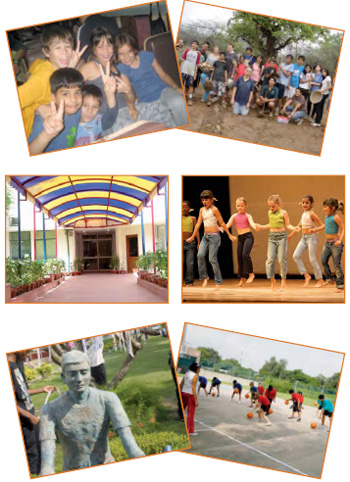
The British School, New Delhi, was founded in 1963. It is a not-for-profit day school with an international student population of about 60 nationalities, with around 640 students enrolled in classes from nursery to year 13. The school offer’s a unique teacher to student ration of 1:6 and holds professional affiliations with the cambridge International Baccalaureate Organisation (IBO) and is an accredited member of Council of International Schools.
It has a fully wireless campus, has on-line research databases, facilities for teachers to plan activites online and has virtual learning environment.
The school facilitates international education by enabling students from Delhi who have a clear vision or who May think of opting places like UK , USA and Canada for their higher studies, through their course and curriculum.
It also has runs the International Baccalaureate Diploma Programme that includes a period of industry training. The objective is to help the students with soft skills that go a lon way in their careers, as also help student prepare for the real world challenges. This has been done due to the fact that at this age children have the widest grasping mind and intellect power. This programme runs for the final two years of a student’s secondary education.
Intercultural Schooling with a Difference!
 Graham Ranger
Graham Ranger
Director, The British School
In conversation with, Graham Ranger, Director of The British School, New Delhi. There he teaches on the IB Diploma Programme. He has been heading the school since July 07. From 2002-07 he was one of Her Majesty’s Inspector’s of Schools, in England, with national responsibility for helping to improve some of the most dysfunctional schools
in inner city areas. Here is what he had to say about the school:
What are the measures taken by the school to provide international education with Indian soul?
We do not set out to be an Indian school. We do not follow ICSE or CBSE. We set out to follow overseas curriculum and 90% of our teaching staff is Indian. The aim to have such a large percentage of teachers is to be able to imbue Indian culture amongst its students. We have students of about 60 different nationalities in our school. We work towards forming an inclusive society through the education system we follow.
Kindly elaborate on the teaching-learning and other activities at school.
Our school is a reservoir of privilege. Our teacher student ration is 1:6. What is offered here, as compared to some other schools, is learning with technology. Technology has played an important part in changing the role of a teacher in the present day scenario, in terms of making teaching learning process interactive and having group based learning. We encourage students to participate in their education, speak and evaluate their education.
I do not want students to come to school, sit silently throughout the day and absorb wisdom, which is a very outdated traditional method. We are an accredited school by Council of International Schools. There are many schools who are members with CIS but only five schools are accredited by CIS and we proudly, are one of them.
What are the challenges and opportunities that ICT brings to education in your school?
The challenge for teachers is the role change/ cultural change, not being the only source of information students can access, which was the case earlier. Secondly, to keep up technologically with students, especially, on what the students do with it in their leisure time. If we do not use the technology as well as the students, then I think we are letting them down.
One downside is the amount of control you have to bring in, in form of filters and checks. Talking about opportunities, we have a fully wireless environment; children can bring their laptops and access any information anywhere.
We have Promethean interactive whiteboards in every classroom and there is a time to time training for the teachers to make them adept with the technology being used so that they are at ease while using the same with students. For teachers, one of the benefits is that they are using IT now, they are using software where system track the progress of the students and reduce the menial administrative work required of teachers. We also have intranet facility for parents and students, to cut down on emailing. So, all students can just access the website and get all updates. We are, also at present, trailing with Moodle, which is an online virtual learning environment/ platform with primary and secondary students.
What are the efforts taken by your school to enhance the capacity building amongst teachers?
Everybody gets a full induction of all the technology available at the school. We invest a high percentage of our budget into training the teachers, that is, six percent. This is because we have to have internationally competitive staff and we have to give them exposure to the technology being used across other international school.
Does the school hold any collaborations? What do you opine about PPP in school education system?
We have collaborations with a lot of corporate houses, in order to provide students who are about to graduate with work experience. The students are also later, additionally, put through CRS units of corporate houses to get a week of experience with NGOs and social work. We have membership with Round Square. About PPP, it is a good model for schools but only when much needed invest comes from private players but at the same time accountability is maintained through public aspect of the partnership. It becomes a topic of concern when it leads to springing up of school like mushrooms, especially with respect to the quality of education it brings along.



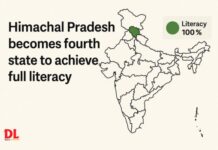
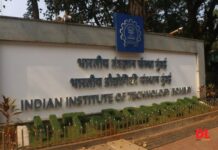

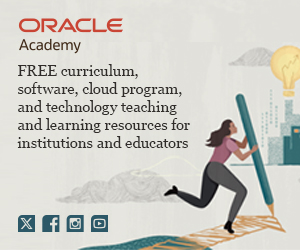

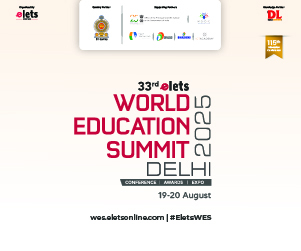

 Open and Distance Learning need to address issues on how to standardise competencies within the broad framework of RPL for placing a comprehensive educational system
Open and Distance Learning need to address issues on how to standardise competencies within the broad framework of RPL for placing a comprehensive educational system 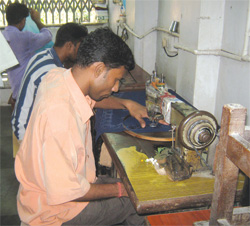 The need for giving emphasis on skill development, especially for the less educated, poor and out of school youth has been highlighted in various fora. The skill level and educational attainment of the work force determines the productivity, income levels as well as the adaptability of the working class in changing environment. Large percentage of population in India is living below poverty line. One of the important causes is lower percentage of skilled persons in the workforce.
The need for giving emphasis on skill development, especially for the less educated, poor and out of school youth has been highlighted in various fora. The skill level and educational attainment of the work force determines the productivity, income levels as well as the adaptability of the working class in changing environment. Large percentage of population in India is living below poverty line. One of the important causes is lower percentage of skilled persons in the workforce. Programme (CDEEP) IIT Bombay has been started with the objective of providing quality education in the field of science and engineering, to any willing individual, free of cost. Live webcast courses are ideally suited for individualised learning. They seek to benefit all those who live in remote areas, and those who want to update their knowledge. With the spread of the virtual classroom, CDEEP is proving that distance is no longer an obstacle to learning. The project provides web based distance education solution for those wanting to pursue an engineering degree.
Programme (CDEEP) IIT Bombay has been started with the objective of providing quality education in the field of science and engineering, to any willing individual, free of cost. Live webcast courses are ideally suited for individualised learning. They seek to benefit all those who live in remote areas, and those who want to update their knowledge. With the spread of the virtual classroom, CDEEP is proving that distance is no longer an obstacle to learning. The project provides web based distance education solution for those wanting to pursue an engineering degree.  IIT Bombay has been active in distance education for the past eight years with the satellite transmission. In January 2008, IIT Bombay signed a MoU with the Indian Space Research Organization (ISRO) to transmit its courses, free and unencrypted, through the satellite EDUSAT. In return, ISRO has agreed to provide free bandwidth. Any institution that has a student interactive terminal (SIT) May receive the courses free of cost, but May not record them without IITB's explicit approval.
IIT Bombay has been active in distance education for the past eight years with the satellite transmission. In January 2008, IIT Bombay signed a MoU with the Indian Space Research Organization (ISRO) to transmit its courses, free and unencrypted, through the satellite EDUSAT. In return, ISRO has agreed to provide free bandwidth. Any institution that has a student interactive terminal (SIT) May receive the courses free of cost, but May not record them without IITB's explicit approval.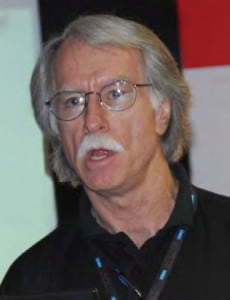 Mimio began in 1997 with a singular philosophy: to make learning more engaging for students. Yukti Pahwa and Sheena Joseph, in conversation with Jaemes Shanley, find out more about their interactive teaching technologies and what it takes to integrate them to the Indian classrooms
Mimio began in 1997 with a singular philosophy: to make learning more engaging for students. Yukti Pahwa and Sheena Joseph, in conversation with Jaemes Shanley, find out more about their interactive teaching technologies and what it takes to integrate them to the Indian classrooms Inspired by teachers and students, the MimioVote student assessment system is the easiest, most accurate way for teachers to assess student comprehension. The rechargeable MimioVote system provides real-time assessment and flexible testing options. Newly designed MimioStudio software and intelligent illuminated response buttons eliminate student error
Inspired by teachers and students, the MimioVote student assessment system is the easiest, most accurate way for teachers to assess student comprehension. The rechargeable MimioVote system provides real-time assessment and flexible testing options. Newly designed MimioStudio software and intelligent illuminated response buttons eliminate student error 
 Graham Ranger
Graham Ranger









Giving Life Another Chance
How the USAID supported programme, Ek Mauka, is providing basic livelihood and employability skills to out-of-school deprived youth
This shortage of knowledge and skills has resulted in a workforce that does not meet the demands of the current and future job market that largely caters to a globalised economy. This in turn has led to an increase in the number of unemployed youth despite steady economic growth. Of those who are employed, a large proportion is underemployed with jobs that are not commensurate with their educational qualifications. The continued exclusion and disillusionment of these young people May prove costly for India in terms of social stability. Uneducated and unskilled youth tend to become socially marginalised; the resultant boredom and idleness can be significant drivers of violent extremism among such youth.
Given these gaps in skill development, a number of NGOs, funded by donor organisations and private foundations, have launched skill development initiatives for the poor and disadvantaged. Many of these programmes have been very successful, having placed a number of disadvantaged youth in new economy jobs. As the courses offered are short term and flexible and have no access barriers, they are also popular with students.
The USAID supported Ek Mouka programme provides basic life and employability skills to deprived out-of-school youth. Implemented by the CAP Foundation, a Hyderabad based NGO, the programme provides training to youth, aged 18-25, in market-oriented skills, such as computer usage, spoken English, communications, and customer relations to make them more employable. Poor and marginally educated youth are mobilised, provided training in the skills sought by industry, and then linked to jobs. The programme is designed in close collaboration with the private sector and fulfills their need for trained manpower. Apart from providing financial resources and sharing training costs, the private sector is also engaged in market surveys, curriculum development, classroom lectures, training, and placement. Partnerships have also been established with government and non-government organisations for supporting scale-up, implementation, technical cooperation, and resource mobilisation.
Over the past four years, Ek Mouka has provided training to over 100,000 youth across 15 states, with a placement rate of over 70%. The placement figure does not include a number of graduates opted to pursue further education instead of employment as a result of the programme. The average entry level salary of the graduates is ` 3500 per month and, in most cases, this has made a significant difference to the lives and families of these poor youth. The quality of the training has been ensured through a dynamic curriculum, digitised content, frequent training of trainers, regular assessments, and close monitoring, including tracking of students post placement. The entire process, from mobilisation to final job placement, was standardised and internationally certified (ISO 9001:2008).
Some of the key lessons learned from the implementation of this programme include:
Ek Mouka has provided training to over 100,000 youth across 15 states, with a placement rate of over 70%
Through another initiative called Skills for Youth (SkY), USAID is attempting to use some of these lessons to strengthen current government programmes and policies on skill development. A holistic approach to skill development will need to have the following essential components:
Although the author is employed by the United States Agency for International Development (USAID), the opinions expressed in this article are solely those of the author and May or May not be those of the Agency.